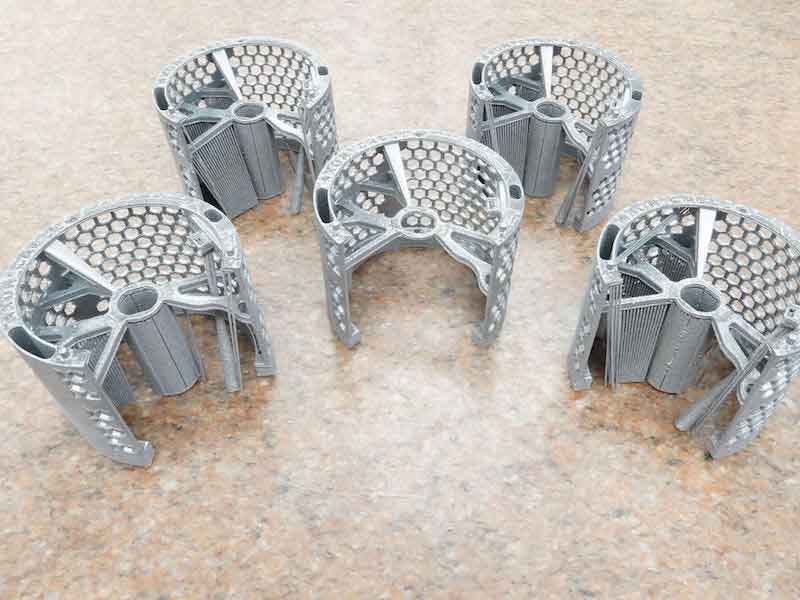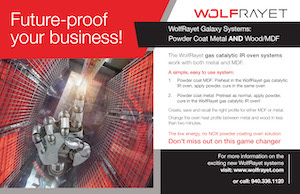The metal additive manufacturing industry tends to show elaborate, complex geometries—often pictured as printed or maybe even machined.
Watch the full video interview above
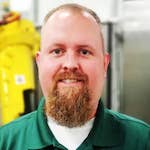 Kurt WagnerBut there are many industries and environments where this is not enough for mission-critical parts. Coating technologies provide corrosion resistance, adhesion qualities, surface protection, and visual and aesthetic properties. However, coating 3D printed parts is not always as easy as coating conventional parts. These complex designs tend to have intricate internal channels that anodization can't reach. Getting a conformal coating on those areas was seen as impossible until now.
Kurt WagnerBut there are many industries and environments where this is not enough for mission-critical parts. Coating technologies provide corrosion resistance, adhesion qualities, surface protection, and visual and aesthetic properties. However, coating 3D printed parts is not always as easy as coating conventional parts. These complex designs tend to have intricate internal channels that anodization can't reach. Getting a conformal coating on those areas was seen as impossible until now.
Experts from Chemeon Surface Technology and Wagner Machine Company joined the hosts of 3Din30 to uncover the technologies that make it possible for engineers to coat their most complex designs.
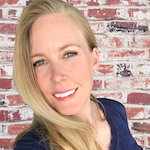 Shay DavisMike Rogerson, the host of the show, was joined by Ted Ventresca, president and COO of Chemeon, and Shay Davis, who leads business development and technical sales for Chemeon, as well as Kurt Wagner, CEO of Wagner Machine Company. Wagner has been precision machining for about 40 years, and about a year ago decided to add metal additive with a Sapphire machine from Velo3D, where they are printing F357 aluminum.
Shay DavisMike Rogerson, the host of the show, was joined by Ted Ventresca, president and COO of Chemeon, and Shay Davis, who leads business development and technical sales for Chemeon, as well as Kurt Wagner, CEO of Wagner Machine Company. Wagner has been precision machining for about 40 years, and about a year ago decided to add metal additive with a Sapphire machine from Velo3D, where they are printing F357 aluminum.
Here is a transcript of the conversation on coating 3D parts:
Mike Rogerson: So Ted, we talked a little bit about what Chemeon does. Maybe you can give us a broader perspective.
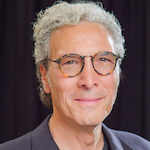 Ted VentrescaTed Ventresca: Sure. What we are is a chemical manufacturer and specialty chemical company that creates chemistry specifically for the industry, such as metal finishing anodizing powder coating in various ways, whether it's medical products or automotive, aerospace, electronics, aviation. You had mentioned at the beginning, Mike, and this is our work with Kurt, as well as the corrosion protection, the corrosion resistance, because Chemeon has some very unique patents and unique chemistries that are military specified. They meet certain Military Details. And between that, and between the additional training and the support that experts like Shay and we have a whole range of R& D PhD scientists and chemistry team developing new technologies. So, between that, the support that's provided to customers and the relationship that we forge, it's one of those key things that's beyond the chemistry.
Ted VentrescaTed Ventresca: Sure. What we are is a chemical manufacturer and specialty chemical company that creates chemistry specifically for the industry, such as metal finishing anodizing powder coating in various ways, whether it's medical products or automotive, aerospace, electronics, aviation. You had mentioned at the beginning, Mike, and this is our work with Kurt, as well as the corrosion protection, the corrosion resistance, because Chemeon has some very unique patents and unique chemistries that are military specified. They meet certain Military Details. And between that, and between the additional training and the support that experts like Shay and we have a whole range of R& D PhD scientists and chemistry team developing new technologies. So, between that, the support that's provided to customers and the relationship that we forge, it's one of those key things that's beyond the chemistry.
Mike Rogerson: Nice. And Shay as the chemistry expert, what are you working on?
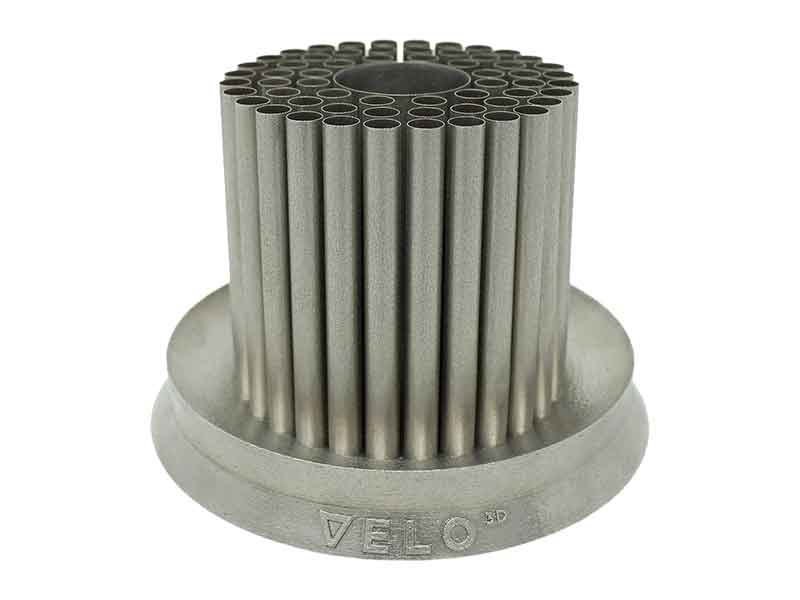 Shay Davis: So, I'm actually trying to, I guess, storm the industry, aerospace defense ground with this new product to replace hexavalent chromium, which has been on the out now. In the U.S. finally, it's already been pushed out in Europe for REACh and RoHS. Up until recently, it's been a challenge to penetrate into the aerospace industry for the lighter aluminum alloys to push out hexavalent chromium with a good replace plan. eTCP is this new next generation product, for enhanced trivalent chromium pretreatment that can really be a drop in replacement, offering exceptional corrosion resistance to paint adhesion needed. It could be used as a masking agent and a noted seal. You can put it over different plating processes like sink, nickel, CAD, and electro nickel to extend as a top coat to extend their salt spray testing, corrosion testing. It's exciting to not only offer anodizing chemistry, which is a thicker coating, but this is a much thinner conductive protection for light metals.
Shay Davis: So, I'm actually trying to, I guess, storm the industry, aerospace defense ground with this new product to replace hexavalent chromium, which has been on the out now. In the U.S. finally, it's already been pushed out in Europe for REACh and RoHS. Up until recently, it's been a challenge to penetrate into the aerospace industry for the lighter aluminum alloys to push out hexavalent chromium with a good replace plan. eTCP is this new next generation product, for enhanced trivalent chromium pretreatment that can really be a drop in replacement, offering exceptional corrosion resistance to paint adhesion needed. It could be used as a masking agent and a noted seal. You can put it over different plating processes like sink, nickel, CAD, and electro nickel to extend as a top coat to extend their salt spray testing, corrosion testing. It's exciting to not only offer anodizing chemistry, which is a thicker coating, but this is a much thinner conductive protection for light metals.
Mike Rogerson: And you mentioned this technology might have a common history that people are familiar with something from Hollywood, potentially.
Shay Davis: A lot of times when people ask me," What do you do?" Well, have you never seen a movie, Erin Brockovich? She fights that carcinogenic gold hexavalent chromium that causes cancer. As a company, we really pride ourselves on focusing on the more environmental reach for house compliance stuff. One of the industry needs has always been to have something to replace that as well as potentially to be able to see it. This eTCP also offers a physical identifier with a bit of a color to the product. Is hexavalent chromium, the native species goldish, brownish yellow hue, which, basically the current tri surveillance were clear and also not quite as robust.
Mike Rogerson: So, you mentioned a coating, and from an application point of view, what is a designer trying to do when they coat apart? What are they trying to accomplish?
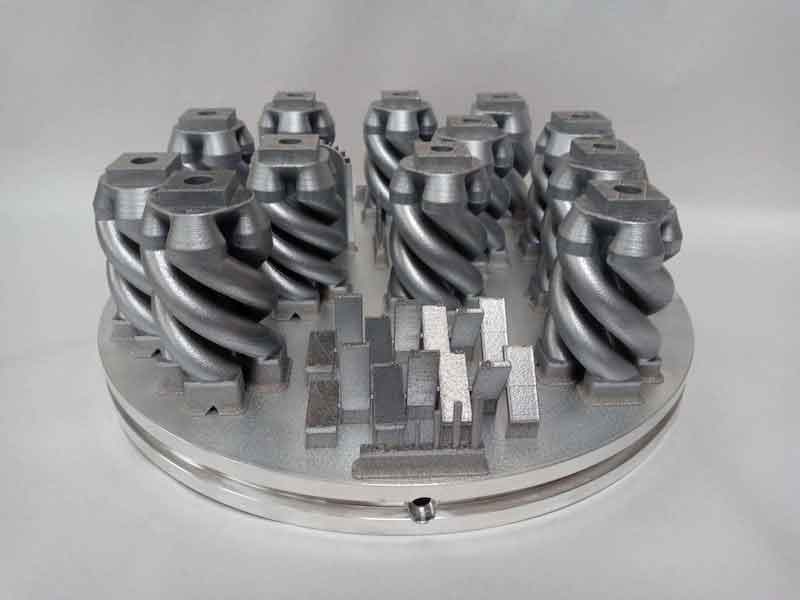 Shay Davis: It depends. In most cases it's often corrosion resistance performance. They need to go by this test matrix that goes by, or metrics that 168 hour salt spray, 336 hour salt spray, depending on what the application is. That's most common for aluminum. You might have a hundred hour for say, or might be 240, I believe, actually. But regardless, you want to hit that corrosion resistance performance. In some places they only need painting like under powder coating and stuff like that. This gives a dual protection. And then being able to know that your parts are coated is nice. You actually know that they've been processed, they're protected, and you can speed up production in that sense. But it can be used in a lot of ways, like getting into areas where you can't get that electrolytic or the coats in there, or if you're trying to anodize something and you need to be able to get into small, down tubes and whatnot. This can still provide a level of protection. Whereas, if it was bare, you'd get nothing. Since you can't get the anodize, sometimes in there for those plating processes.
Shay Davis: It depends. In most cases it's often corrosion resistance performance. They need to go by this test matrix that goes by, or metrics that 168 hour salt spray, 336 hour salt spray, depending on what the application is. That's most common for aluminum. You might have a hundred hour for say, or might be 240, I believe, actually. But regardless, you want to hit that corrosion resistance performance. In some places they only need painting like under powder coating and stuff like that. This gives a dual protection. And then being able to know that your parts are coated is nice. You actually know that they've been processed, they're protected, and you can speed up production in that sense. But it can be used in a lot of ways, like getting into areas where you can't get that electrolytic or the coats in there, or if you're trying to anodize something and you need to be able to get into small, down tubes and whatnot. This can still provide a level of protection. Whereas, if it was bare, you'd get nothing. Since you can't get the anodize, sometimes in there for those plating processes.
Mike Rogerson: And you mentioned having a color to verify, you mentioned getting in these internal spaces. It sounds like having conformal coating is important, but what's a downside if it's not conformal, if you have gaps?
Shay Davis: Then you can have excessive corrosion potential, especially if it's in those weird channels and areas where moisture can pool or collect. At least you have this barrier for this conversion coating that reacts with the aluminum surface. And it helps protect it against that. Those interesting areas where you can easily inspect and you can easily clean out. Just as an extra level of protection and extends the life of your parts.
Mike Rogerson: Kurt, we hinted at it earlier on, you're using this for 3D printed parts. So, what is it about this that creates a synergy between CHEMEON's technology and 3D printed parts?
Kurt Wagner: The biggest thing is what Shay just talking about, where with 3D printed parts, we're running into parts that require coating in areas that normal processes can't get to. So, powder coat, obviously you have to have access to the part to be able to spread the powder on, same with a wet paint process. But something that a lot of people might not know is coats like anodize, and a lot of different electroless coats or electro plating processes have to have access. They won't coat internal features. As we've run into parts that have internal features that require some sort of corrosion resistance, it's been really tricky to find suitable coats. We've run into applications where we use specialty ceramics to coat internal features, but that's a really expensive process. This is a much more affordable process and it's something that we can do in- house. So, it really doesn't have a huge impact on the part cost. And it meets the requirements in a lot of situations.
Mike Rogerson: This is one of these parts that we've been talking about. Can you give us a little bit of history on this one? And then I'll show the internals that we had up before.
Kurt Wagner: So, this is a turbine housing. It's for a very high performance application, where they're trying to squeeze every last bit of efficiency out of it. Originally, this was designed as a machine component and in an attempt to get a little more efficiency out of it, they added cooling channels that you could see before on the section view there. So, there's a large cooling channel that goes around the entire outside of this part. What they end up doing in is they pump fuel through that channel and it cools the housing and preheats the fuel and gives them several percent efficiency bump. So, that's the application in this case. I've had other applications with various corrosive environments, where internal features were a concern.
Mike Rogerson: And so, when you're coating this, you're coating the internal or channels as well, this little.
Kurt Wagner: Yeah. Once we printed the part and then had it recreated, and after finished machining, which we also do in- house, then we do the ECP coating on this one. That'll coat every surface of the part, not just the visible and external surfaces.
Mike Rogerson: And you mentioned in- house, is this coating something that you have to send out for, or are you able to do this in- house as well?
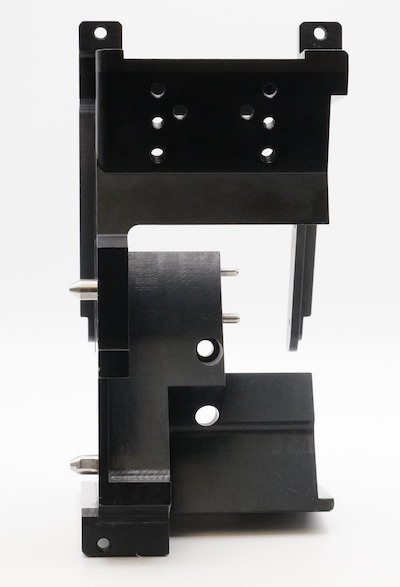 Kurt Wagner: We do this coating in-house, which is a big advantage. We've been using CHEMEON's TCP- HF for a long time, probably 10 years or so. And when we started running into these internal coating issues, we called them and asked," Hey, could we use the TCP coating that we're currently using?" And because of the material we're printing in F357, they said that the TCP- HF wouldn't work well on this material has there's some limitations. But they said they had just come out with a new process that works on a wider variety of aluminums and should work on this. So, we actually tested this on a different project than this, coated the parts, that salt spray test and everything else, and verified that it worked well for the F357 aluminum.
Kurt Wagner: We do this coating in-house, which is a big advantage. We've been using CHEMEON's TCP- HF for a long time, probably 10 years or so. And when we started running into these internal coating issues, we called them and asked," Hey, could we use the TCP coating that we're currently using?" And because of the material we're printing in F357, they said that the TCP- HF wouldn't work well on this material has there's some limitations. But they said they had just come out with a new process that works on a wider variety of aluminums and should work on this. So, we actually tested this on a different project than this, coated the parts, that salt spray test and everything else, and verified that it worked well for the F357 aluminum.
Mike Rogerson: Are you able to do?
Kurt Wagner: And we can do this process in- house. We've got a chem film line in- house that we're using. It's pretty straightforward set up and maintained.
Mike Rogerson: And so, you're doing the coating and the testing in- house, or just?
Kurt Wagner: CHEMEON does the testing for us.
Mike Rogerson: Okay. Nice. Shay, I'll come back to you, could you provide a little bit, some depth? What kind of testing are you doing? What are you checking for?
Shay Davis: As he mentioned, he does this in-house. We have either three chemistry or two chemistry tank setups. It's probably one of the easiest processes we can do in-house next to maybe passivating, it's super simple and flexible. And I teach a lot of people how to do it, who have no engineering or chemical background. But for us, what we recommend, monitoring concentration in pH, and then to check, basically validate your process. It's recommended to do salt spray performance testing. Per MIL-DTL 5541 and 81706, which is the governing spec for the 5541, most shops and facilities and suppliers would have to do 168 hours, you use salt spray, salt fog chambers, and to do this in accordance with ASTMs. And then we also do coating weight tests to make sure you're getting a good coating. Sometimes if there's ever issues, but there's several things you can do, coating weights intellectual resistivity, if you need conductivity, instead of, we want to make sure it's not. One of the things with hex chromium is it's a thicker coating. It would often, you'd have to have a different process to make sure that when you needed an electrolyte conductive surface, that you didn't coat too thick. Well, this same process meets both. But they still do the actual conductivity testing, the salt spray testing, coating weights, if needed, and then paint as well when there are surfaces that are accessible, that you get painted. And then we have an external Nadcap and certified lab that will mirror a lot of our testing, make sure that we're operating at a level that it's not just whole health internally, but we use external testing as well for validation.
Mike Rogerson: And you mentioned this visual verification, we actually have an image here. It has a certain color to it. How would you describe... I would think purple, but I think you had some more colorful language.
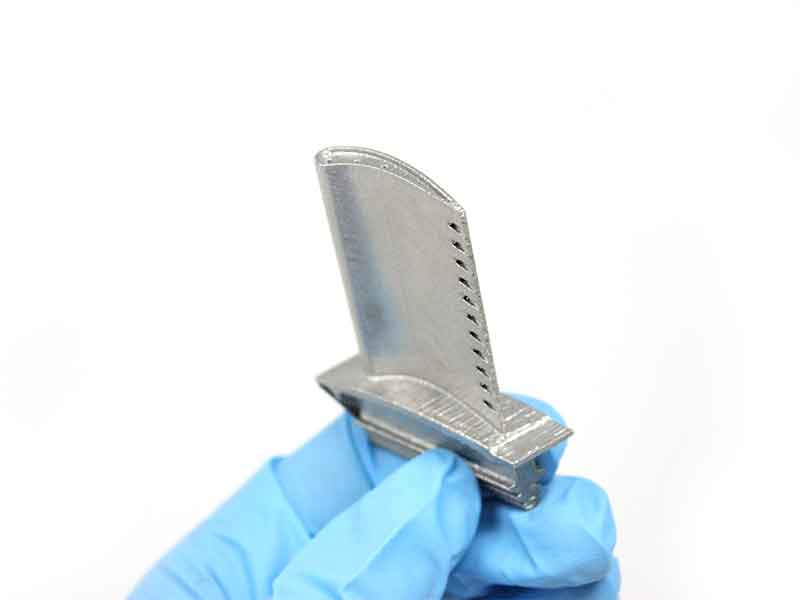 Shay Davis: Lilac, like the purple flock that you might see on the side of the mountain out here on the west, at least. The color is actually dependent on the alloys series and your pre- treatment. Sometimes it's a little stronger. Sometimes it's a little bit more like a brownish purpleish bluish, it could have a blue hue. You can reduce your immersion time for certain alloys series where you don't really want to see as much color, but it shows up very well on the lighter alloys like 2024 or those that have a lot of copper in them, or zinc. It has a variation, but violet would be from the rainbow here and go that way.
Shay Davis: Lilac, like the purple flock that you might see on the side of the mountain out here on the west, at least. The color is actually dependent on the alloys series and your pre- treatment. Sometimes it's a little stronger. Sometimes it's a little bit more like a brownish purpleish bluish, it could have a blue hue. You can reduce your immersion time for certain alloys series where you don't really want to see as much color, but it shows up very well on the lighter alloys like 2024 or those that have a lot of copper in them, or zinc. It has a variation, but violet would be from the rainbow here and go that way.
Mike Rogerson: No. I think we're going to need some purple parts that are trade show from now on. They look pretty good. That'll give us a different part to talk about. And just as a reminder, we are live today. If you have any questions about 3D printing, coating 3D printed parts, the technologies all around this, please feel free to drop us a question. We'll get to it live. I actually see something coming in now. Okay. So, there is a question here. Hey, Roger, good to hear from you. How thick is the coating in microns and what is the temperature limit that it could ... I assume withstand in use? And this is coming from somebody who's making micro turbines.
Shay Davis: The coating is roughly around 120 nanometers thick, at approximately 10 millimeters; very, very thin coating, much thinner than say, one mill coatings. And then the temperature limits, they're basically stated in the MIL SPEC, hexavalent chromium, tolerates less high temperatures, but the MIL-SPEC says as you go up to 250, the powder coating it is fine under powder coating, with an exposure up to 500 degrees. And it still withstand up for those kind of applications. But for general applications, what we do is you follow the 81706 and try to keep it around that level, but you can also test, we always say, test everything. If you have certain parts that need to go through exposure of 200+ degrees Fahrenheit, then we do testing. You basically test it, then you salt spray test that on panels of the same alloy series and whatnot. You can push the limits a little bit, but we tend to fall back to the MIL-SPEC because that's where you have to be able to reference something.
Mike Rogerson: And when you say 500, is that in Fahrenheit
Shay Davis: Fahrenheit. They go up to our 450 to upwards, closer to 500 degrees fahrenheit for.
Mike Rogerson: Okay. Awesome. So Roger, hopefully that answered your question. So, I do want to switch over to Ted. If you could summarize for us a little bit here. What are the major differentiators for this technology? What should people really take away from this?
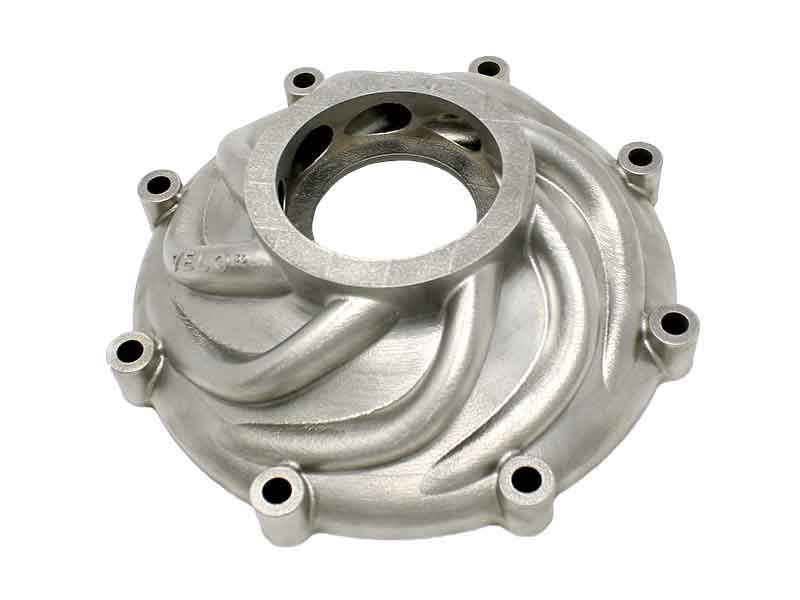 Ted Ventresca: Shay and Kurt have touched on truly some of the unique things, but the major differentiators is the performance of ETCP. Because trivalent chrome has been around for decades. The trivalent chrome that has been specified for military use and meets this Mil-DTL has been around since probably the early two thousands. CHEMEON and our team here, were actually the first individuals to commercialize and scale trivalent chrome, the military specified trivalent Chrome, which was originally created by the United States Navy for commercialization. And we've been able to scale that. But the unique thing about trivalent Chrome, and we've been touching upon this, whether it's F357 for additive manufacturing or 2024 aluminum, is the performance. There are nuances to get it to work consistently well and meet conformance on 2024. The unique thing about ETCP is it consistently performs and conforms on 2024 aluminum. In addition to that performance and performance on 7, 000 series and consistent performance on other alloys as well, the additional aspect is when this is being used either by the DoD or by tier one providers or captive shops, there has been a history of use for decades, eight decades plus of utilizing hexavalent Chrome in which that colorization is key, because that person who is the applicator, they may be going through that part and they are not from necessarily the chemical or science side. They're the applicator whose job is to provide the application to that part. And they need to have that color verification. So, in addition, knowing that part is coated and protected is an additional value to it, but it's the 2024 performance. And also too, I think we go back to it. And I think Kurt is a perfect example of this collaboration of trying to find that solution and being there to support their process. And when metal additives and additive manufacturing of three 3D parts in metal is now just going from a prototype part to hundreds and thousands of parts. That consistent performance and conformance has to be in place. And Kurt certainly has perfected that and your 3D printers have certainly perfected that. And the great thing is that CHEMEON eTCP is the coating that complements that and supports that from a corrosion standpoint.
Ted Ventresca: Shay and Kurt have touched on truly some of the unique things, but the major differentiators is the performance of ETCP. Because trivalent chrome has been around for decades. The trivalent chrome that has been specified for military use and meets this Mil-DTL has been around since probably the early two thousands. CHEMEON and our team here, were actually the first individuals to commercialize and scale trivalent chrome, the military specified trivalent Chrome, which was originally created by the United States Navy for commercialization. And we've been able to scale that. But the unique thing about trivalent Chrome, and we've been touching upon this, whether it's F357 for additive manufacturing or 2024 aluminum, is the performance. There are nuances to get it to work consistently well and meet conformance on 2024. The unique thing about ETCP is it consistently performs and conforms on 2024 aluminum. In addition to that performance and performance on 7, 000 series and consistent performance on other alloys as well, the additional aspect is when this is being used either by the DoD or by tier one providers or captive shops, there has been a history of use for decades, eight decades plus of utilizing hexavalent Chrome in which that colorization is key, because that person who is the applicator, they may be going through that part and they are not from necessarily the chemical or science side. They're the applicator whose job is to provide the application to that part. And they need to have that color verification. So, in addition, knowing that part is coated and protected is an additional value to it, but it's the 2024 performance. And also too, I think we go back to it. And I think Kurt is a perfect example of this collaboration of trying to find that solution and being there to support their process. And when metal additives and additive manufacturing of three 3D parts in metal is now just going from a prototype part to hundreds and thousands of parts. That consistent performance and conformance has to be in place. And Kurt certainly has perfected that and your 3D printers have certainly perfected that. And the great thing is that CHEMEON eTCP is the coating that complements that and supports that from a corrosion standpoint.
Mike Rogerson: We have a question coming in from Sanjay. What coating should be used on parts for withstanding high pressure? So, he mentions at least a four bar. What advice would you give?
Shay Davis: Yeah, that one. That's why we need Sjon Westre, our PhD senior VP of tech on that one. I may note it and get back to you on that one, Sanjay. The thing is once this coating is actually dry, it's very hard coating. It's very difficult to remove it, to withstand quite a bit. It's not like an oxide layer from anodizing. I use that a lot in reference, but when you build that oxide layer, it's two thirds above and the third below the original substrate surface, but this chemfilm, it bonds with the substrate and forms of very hard coating in the sense that it's difficult to remove. Once it's dry, it takes a strong acid to remove it. That potentially could be an application that it could be used in with high pressure, but I would need to know more detail and probably get back to you on something like that.
Mike Rogerson: And as a segue, usually we put this in at the end, but what would be the best way to get in touch with either you or the PhDs you mentioned? If people do have questions and they want to dive deeper into their applications, how should they do that?
Shay Davis: On our website, www.Chemeon.com, we do have an emails, and email, I actually get that email. I see every information that comes in, but you can also reach me with at just my first initial, last name at www.chemeon.com. I'm pretty accessible. The salesperson for all our global customers all over, but we're a small company that really has a very good ability to reach us, to ask us lots of questions and a good team, too. I can reach out to you in our tech center.
Mike Rogerson: Perfect. Yeah, go ahead, Ted.
Ted Ventresca: I'll just add to that, Mike. The great thing is when people do interact and Kurt is certainly a great example of this, you can actually get to the individuals who created the chemistry or have commercialized the chemistry and brought it to market. I mean, it's a very short step process to get the answers or the support that you need. And right now we have actually an automotive OEM and a number of tier one process shops in our training for an anodizing and trivalent chrome right now in our training center downstairs. It's much more than just selling or providing a chemistry. It really is the entire package.
Mike Rogerson: We've heard from some people already, I know some of these industries are represented here, but could you give us a perspective on what types of industries would be common for you to provide solutions for?
Ted Ventresca: Well, you certainly have the DoD. We have a wonderful relationship, a collaborative relationship with the army and nod to both of you, to the Navy air force. We're in projects with the marines on a very interesting field application of eTCP. And that certainly extends to course guard and national guard as well, but of the automotive industry, aviation, solar, if I'm missing anything, Shay.
Shay Davis: Space.
Ted Ventresca: Space, of course.
Shay Davis: You got a couple customers for space and airspace in general.
Ted Ventresca: And satellite aerospace.
Shay Davis: work with Boeing.
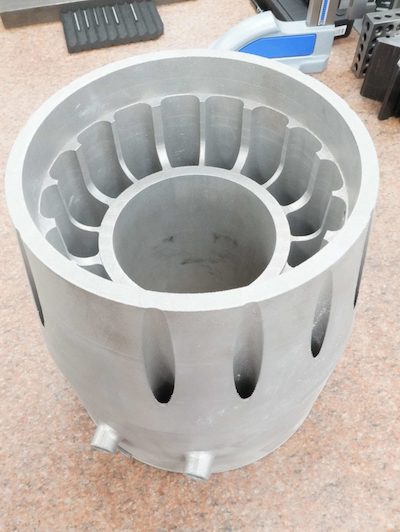 Ted Ventresca: Absolutely. And the work that Shay does with the OEMs is making them aware of this alternative. Because again, too, hexavalent chrome has been used in anodizing as a anodic seal. It's been used as a coat on the alloy itself, on the skin of aircraft. And when you think of getting into the intricate parts that Kurt assembles and designs, and when you're bringing multiple parts together, getting into the coatings of those intricate internal aspects is something that is unique. And especially that it performs, and you can be... The end users have a clear proven and comfort level and validated comfort level that that part is coated. All of that combines to being a great... We try to be a great resource, not only in just the chemistry we provide but everything we provide beyond that.
Ted Ventresca: Absolutely. And the work that Shay does with the OEMs is making them aware of this alternative. Because again, too, hexavalent chrome has been used in anodizing as a anodic seal. It's been used as a coat on the alloy itself, on the skin of aircraft. And when you think of getting into the intricate parts that Kurt assembles and designs, and when you're bringing multiple parts together, getting into the coatings of those intricate internal aspects is something that is unique. And especially that it performs, and you can be... The end users have a clear proven and comfort level and validated comfort level that that part is coated. All of that combines to being a great... We try to be a great resource, not only in just the chemistry we provide but everything we provide beyond that.
Mike Rogerson: Yeah. And Kurt, well, actually we want to hear from you since we're on this topic of working with CHEMEON. How is it at working with CHEMEON? How did you first learn about the company and what's the relationship been like?
Kurt Wagner: I actually don't know how we first started working with CHEMEON. I'm not sure how we got in touch with them, but the reason we got in touch with them and decided to bring this process in- house was because we had electronic components that needed chem film, coating on them. And they also had to get paint process done to them. And our painter had been taking care of the chem film process, and their vendor had issues. They were having some quality issues. And as we looked into that, we realized that there was a lot of extra shipping going on and the quality issues, we decided to bring that in- house. It saved us a lot of money on different parts, but that was why we got into it, was one specific project, but over the last 10 years or so, it's turned into a process that we actually inform a lot of our customers about. It's something that actually provides a benefit for people who didn't even know it was an option. It's something affordable, and just gives them a little bit of something extra. So, that's where great. But as far as working with CHEMEON goes, yeah, it's been great. One of the things I like to say is we're excited about machining and doing things that people think are impossible or challenging, just trying to solve problems. And one of the reasons that we chose to work with Velo is because you guys are excited about the same thing, doing stuff that hasn't been done in additive yet. And CHEMEON is the same way. You can get a hold of Shay. She'll call on her cell phone on the way home from work, just to talk about this stuff. So, they're excited about what they do too. It's extremely nerdy. I don't understand most of it. But they're pretty excited about it. It's great to work with somebody who's excited about what they're doing. When we have a question or a new application, we can call them up and they walk us through it and give us suggestions. And so far they've been spot on.
Mike Rogerson: And I mean, you mentioned your customers, have you had any feedback from the customers? What's their experience in the end use of the coating?
Kurt Wagner: Most of the time we don't get any feedback from them, which we assume is good. That's one of the sad things about it, coatings, if they work, you don't usually hear much about them.
Mike Rogerson: Kind of like marketing. Nobody tells you anything.
Kurt Wagner: Yes. So, we don't get a lot of feedback on that, but we have had, I mean, just in general, people who've appreciated being able to provide a little bit of something extra that they sometimes providing something that they needed and they didn't even know they needed. That's been really nice for us.
Mike Rogerson: We are at 30 minutes, I'll give maybe enough time for one more question, if somebody wants to jump in real quick, but before we do that, let's go around the horn and just summarize your thoughts. Shay, why don't you kick us off?
Shay Davis: Wagner Machine's been a great customer of ours and we have everywhere from that tier three supplier all the way up to the OEMs that we've worked with. And it's been an amazing experience, helping these suppliers be able to provide their customers, their end users, the defense, projects and jobs or aerospace jobs, or whatever their end users are, we can work with all of them. And it's been really, honestly, I love experience doing this. And might reach out and they'll come here and do some work with us, or we'll do some work with them or IVD projects to try to discover what we can do to replace hex chrome for stuff for Airbus or conversion coating for Boeing or space customers. All these challenges that people need for these types of replacements. And it just being able to see that our our product, this eTCP, this new awesome product can be used in this new innovation with 3D metal printing. Up until recently, I've just known about the plastic stuff. It's so awesome. It's really exciting to see that there's always something new that we can work on. It never really gets an honest or stagnant, and whether you're small or big, it doesn't matter with us because we love it all.
Mike Rogerson: Yeah. We say we work on everything from missions to Mars to racing cars. So, a little bit of everything in there.
Shay Davis: We even have this race car engine people using our eTCP now. It's pretty cool.
Mike Rogerson: Very nice. Ted, closing thoughts from you.
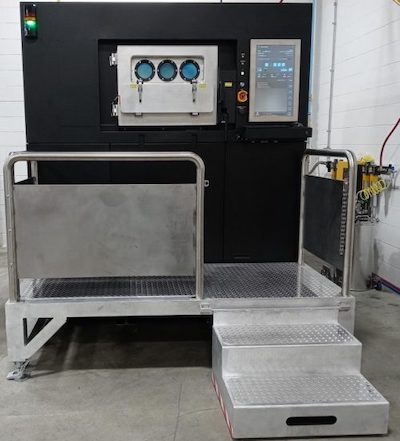 Ted Ventresca: Yeah. I'll liked a good part of what Shay said. I'll share with you that going back before, even joining CHEMEON, I was in Washington, D. C, and involved with the military in that respect from a business standpoint. I was at the unmanned vehicles shows, but this is going back 11 years. And there was an excitement in the military about talking about putting 3D printers, actually in the field and on ship as they needed one- off parts. So, when you think about what has happened in 11 years and 12 years, that rather than just a one- off prototype part, that was not a mission critical part. That was just something that they needed to fix. And it was a plastic part that they worked on then to what Velo has been able to create and what Kurt has been able to perfect in creating and replicating hundreds of parts and parts that are critical in tolerance, in design and assembling these parts. And now being able to provide the coating aspect that provides that additional corrosion protection for this mission critical. When you think about the way all of our industry is moving just a decade, that's what really is. Thank you for Kurt for saying that and including us with you, and Velos. That's what we're really excited about you. And that's what really gives us some great possibilities.
Ted Ventresca: Yeah. I'll liked a good part of what Shay said. I'll share with you that going back before, even joining CHEMEON, I was in Washington, D. C, and involved with the military in that respect from a business standpoint. I was at the unmanned vehicles shows, but this is going back 11 years. And there was an excitement in the military about talking about putting 3D printers, actually in the field and on ship as they needed one- off parts. So, when you think about what has happened in 11 years and 12 years, that rather than just a one- off prototype part, that was not a mission critical part. That was just something that they needed to fix. And it was a plastic part that they worked on then to what Velo has been able to create and what Kurt has been able to perfect in creating and replicating hundreds of parts and parts that are critical in tolerance, in design and assembling these parts. And now being able to provide the coating aspect that provides that additional corrosion protection for this mission critical. When you think about the way all of our industry is moving just a decade, that's what really is. Thank you for Kurt for saying that and including us with you, and Velos. That's what we're really excited about you. And that's what really gives us some great possibilities.
Mike Rogerson: Nice. Kurt, I'll let you close this up.
Kurt Wagner: All right. Well, I guess I'm going to tack onto that. I think what I would say is the most interesting part of our job is solving challenges for customers and the vast majority of the time, that's not just a machining challenge or part design challenge or something like that. The vast majority of the time solving the tough problems involves connecting people. So it's great to be able to work with different vendors like CHEMEON or Velo, different machine tool manufacturers, everybody that we work with and connect the dots so that our customers can end up with the ideal part. Not just something that's good enough, but the ideal part for whatever their application is.
To learn more about Velo3D's Advanced Manufacturing Solution, please visit www.velo3d.com




